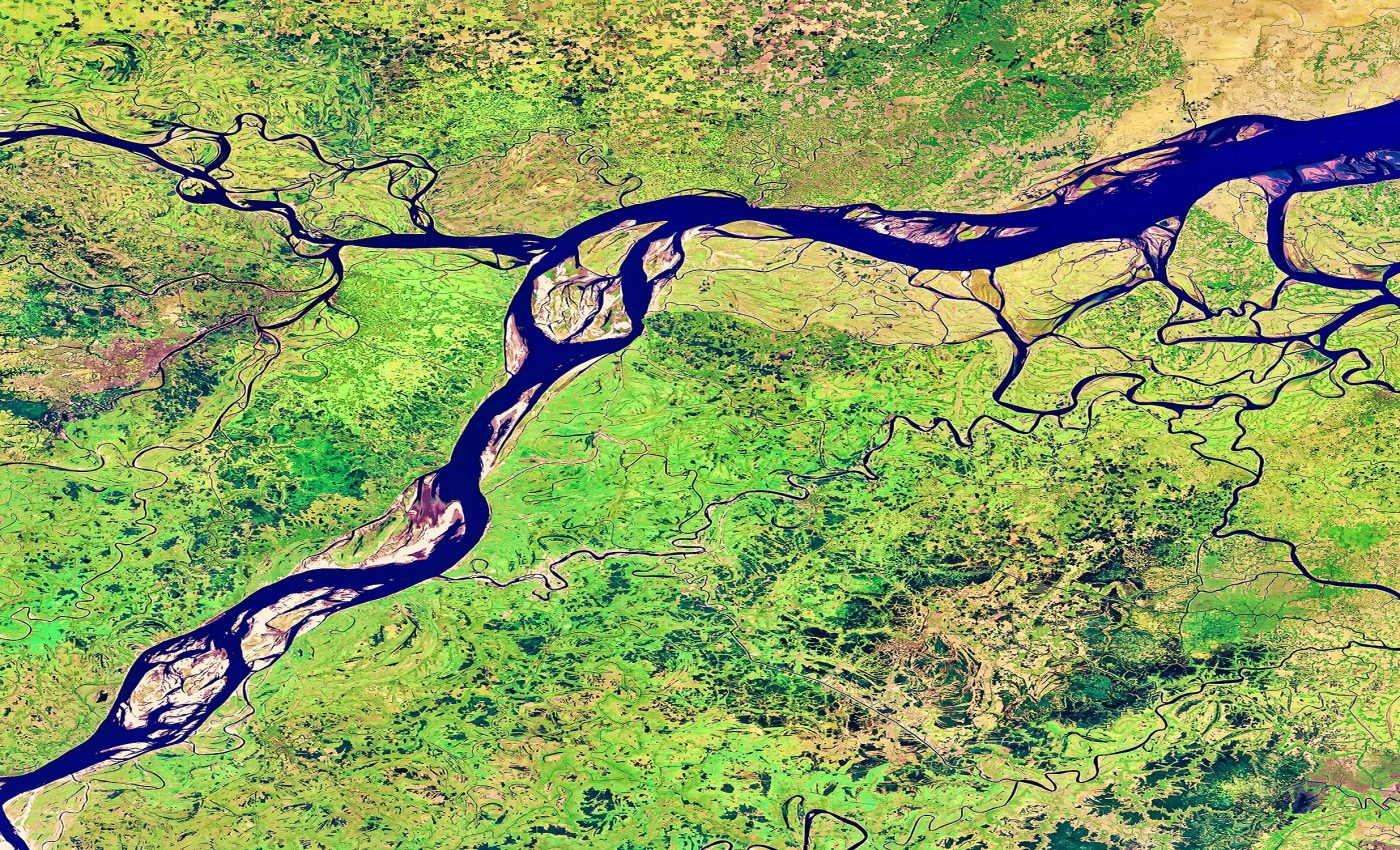
Discovery about Earth's rivers could help us find water on other planets
Rivers, lava, and ice carve through landscapes in twisting, meandering channels. At first glance, their bends appear similar.
However, a recent study from researchers at The University of Texas at Austin reveals that rivers form curves differently than lava or ice channels.
The exact forces shaping these channels remain unclear. However, past research suggests that the interaction between the fluid and the surrounding terrain plays a crucial role.
This study builds on those ideas by analyzing thousands of bends formed by different natural processes.
Science behind the river bends
In rivers, centrifugal force plays a major role. Water moves faster along the outer edges of a curve and slows down along the inner edges.
This causes erosion on the outer banks while depositing sediment on the inner banks, which gradually intensifies the bends.
Volcanic and ice channels, however, behave differently. These channels erode through melting rather than by carrying and depositing sediments.
Because of this, erosion occurs mainly on the outer edge of a bend, resulting in smaller curves when compared to rivers.
“This distinction sets up a great natural experiment for us to see if the shape, or size, of bends in rivers is distinct from those in volcanic or ice channels,” said Tim Goudge, a co-author on the study and an assistant professor at the Jackson School of Geosciences, Department of Earth and Planetary Sciences.
Implications beyond Earth
This research could help scientists analyze sinuous channels on other planets and moons, where the origin of fluids remains uncertain. Without direct access to these channels, their shapes may provide clues about their formation.
The study, published in Geology, was led by Juan Vazquez, who completed his undergraduate degree at the Jackson School in 2024.
He worked alongside Goudge to analyze thousands of bends in rivers on Earth, volcanic channels on the Moon, and ice channels on glaciers.
Vazquez initially believed he had made an error when analyzing the data. However, he soon realized that river bends were significantly more extreme than those of lava and ice.
“It wasn’t until the parameters for the code we had set for the volcanic channels on the Moon kept failing for the rivers on Earth that we realized, ‘Oh, that’s not a fault of the code. It’s an intrinsically different amplitude,’” Vazquez related.
Identifying channel origins
The study also found that volcanic and ice channels tend to have a higher proportion of downstream-accentuated bends compared to rivers.
This pattern could help distinguish different types of channels on planetary bodies like Titan, Saturn’s largest moon.
On Earth, scientists can observe the fluids or study geological evidence to determine a channel’s origin.
However, on Titan, liquid ethane and methane carve through ice, making it difficult to determine whether channels form like rivers or through melting and dissolution.
Mars presents a similar challenge. Several billion years ago, the planet had flowing rivers and active volcanoes.
Today, sinuous channels appear on the sides of Martian volcanoes. Some scientists believe these formed from lava, while others argue that melting snow created them.
“There are these sinuous channels on the sides of Martian volcanos. Some people have interpreted them as volcanic channels, and some people have interpreted them as rivers that formed when maybe snowpack on the top of the volcano melted,” said Goudge.
“We’re saying that because volcanic channel bends are so distinct, you can measure those channels to find out.”
Future research on river bend patterns
Goudge cautions that this research should not be seen as a strict rule for identifying the origin of channels.
Natural channels, whether formed by rivers, lava, or ice, can vary widely due to different environmental conditions. Because of this variability, the method may not always provide clear answers.
Before scientists can confidently use these findings to determine whether a channel was created by water, lava, or ice, more data needs to be collected.
Further studies and analysis of additional channels are necessary to confirm the reliability of this approach.
By refining this research, scientists may unlock a new way to study planetary surfaces, helping them to decode the histories of distant worlds.
The study is published in the journal Geology.
—–
Like what you read? Subscribe to our newsletter for engaging articles, exclusive content, and the latest updates.
Check us out on EarthSnap, a free app brought to you by Eric Ralls and Earth.com.
—–













